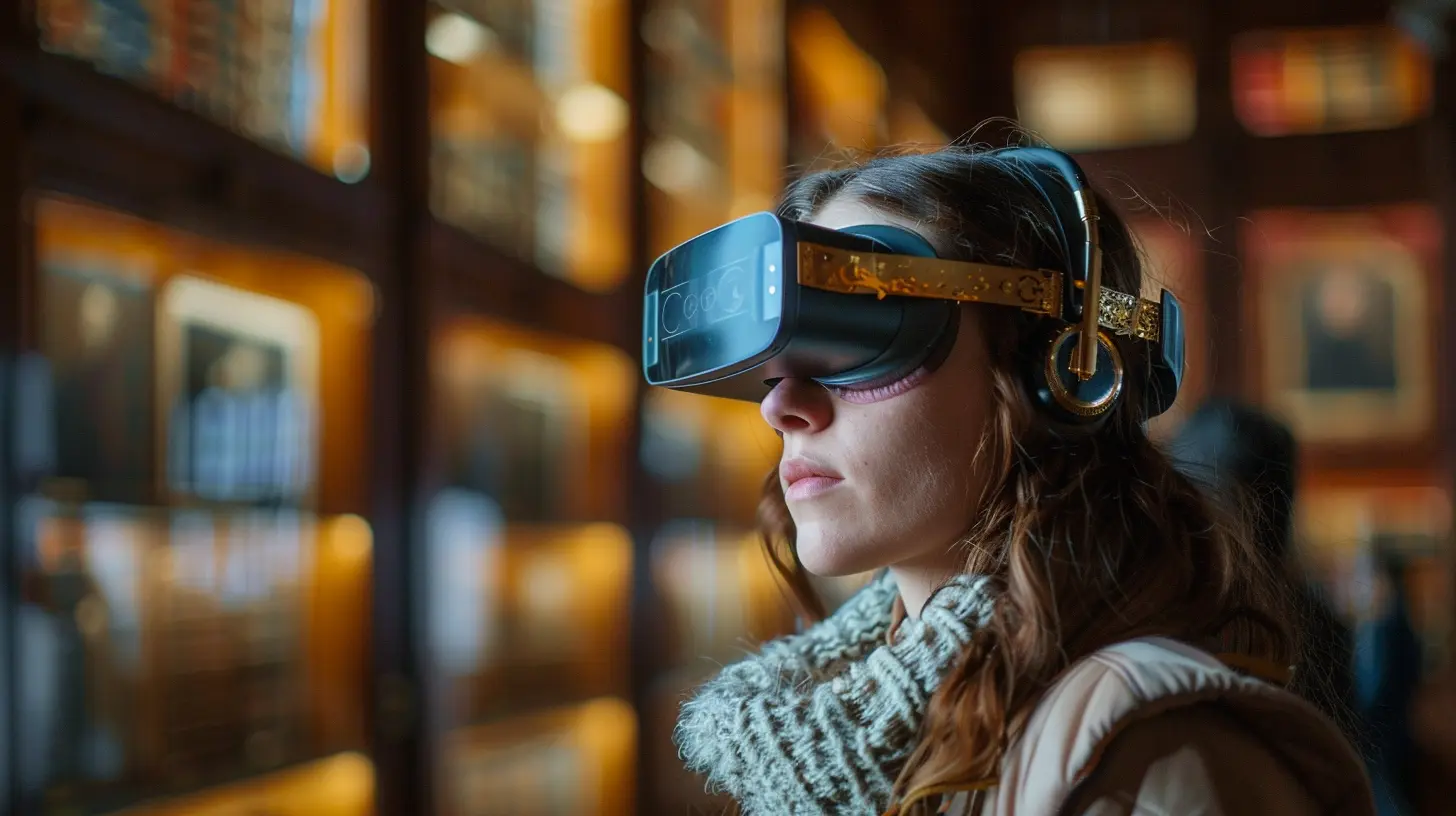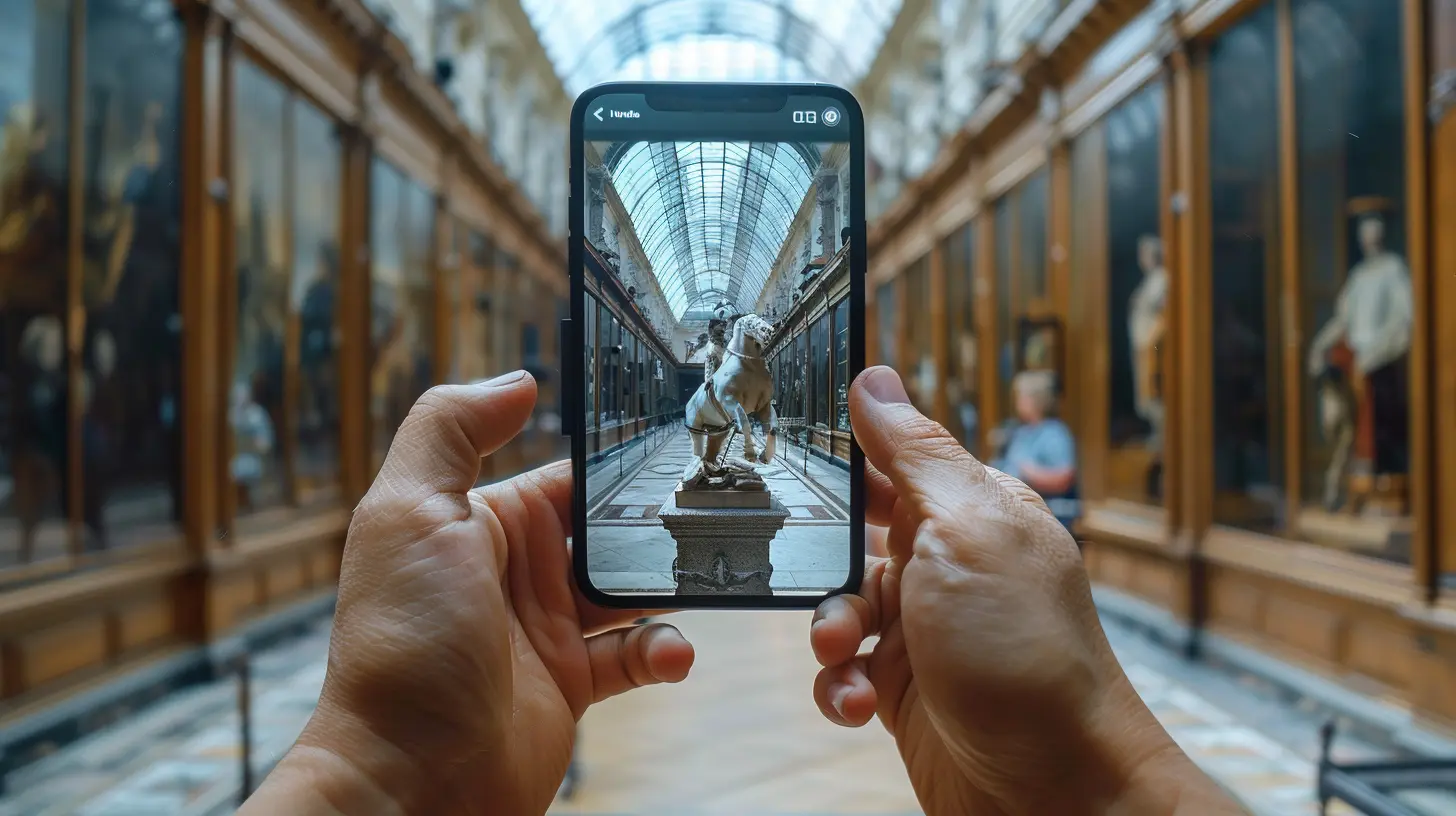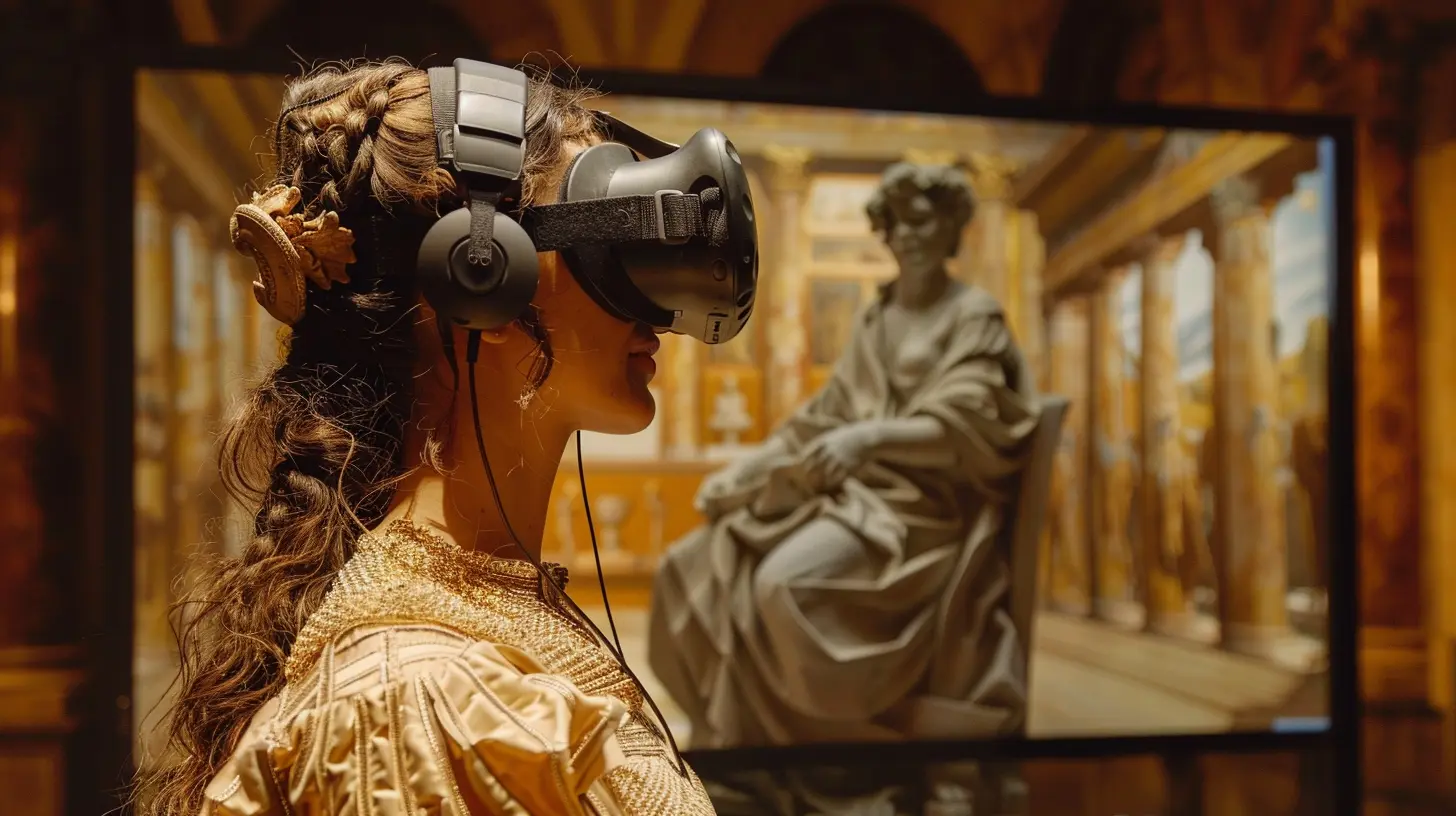Bringing History to Life: The Use of AR in Museums and Cultural Institutions
12 June 2025
Let’s be real—history is awesome. It’s full of fascinating stories, epic battles, outrageous fashion choices (looking at you, powdered wigs), and people who changed the world in ways we’re still trying to wrap our heads around. But let’s also be honest—it can be a bit... dusty. Traditional museums, while chock-full of knowledge, aren’t always the most thrilling places for everyone. You walk around, stare at glass cases, maybe read a plaque or two, and move on. Well, prepare for a plot twist—Augmented Reality (AR) is here to shake things up and drag history out of the dusty archives into the 21st century.
AR is the tech that fuses digital magic with the real world. And museums? They’re starting to use it like a time machine with an attitude.

So What’s the Deal With AR in Museums?
Augmented Reality is basically the cooler cousin of Virtual Reality. Instead of whisking you off to some entirely digital world like VR does (goodbye, world—hello, space zombie apocalypse), AR layers digital goodies right on top of the real world. Think Pokémon GO, but instead of catching Pikachu, you’re watching Caesar declare war or Leonardo da Vinci explain his sketches.Museums and cultural institutions are using AR to make exhibits interactive, immersive, and—dare I say—fun. It’s like turning the whole museum visit into a choose-your-own-adventure experience, but without the risk of falling into a lava pit.

Why AR Is a Game-Changer for Museums
1. History with a Dash of Drama
Imagine walking into a museum and seeing King Tut’s tomb come to life, complete with glowing golden treasures and a snarky Pharaoh giving you a tour. That’s not science fiction—that’s AR doing its thing. Instead of staring at still artifacts, AR lets you interact with them. They talk, they move, and they tell you things that a dusty old plaque never could.2. It’s All About the Experience, Baby
Let’s face it, a lot of people (especially the younger crowd) expect experiences to be a little more… interactive. AR gives museums the edge they need to compete with the constant digital barrage from streaming platforms, games, and social media. Because let’s be real, a 500-year-old sword might not seem that exciting—until it’s swinging in the hands of a digital gladiator right before your eyes.3. Education That Doesn’t Feel Like Homework
AR makes learning sneaky. You’re having fun, interacting with digital reconstructions, and suddenly—bam!—you realize you just learned something. It's like hiding broccoli under a mountain of cheese: you still get the good stuff, but it goes down way easier.Teachers love it, students don’t even realize they’re learning, and museum staff breathe a sigh of relief as engagement goes through the roof.

Real-Life Examples That’ll Blow Your Mind
The British Museum (London)
The British Museum dipped its toe into the AR pool with an interactive app that allows visitors to see ancient Egyptian artifacts in all their former glory. Instead of just looking at the Rosetta Stone (which, let’s be honest, isn’t visually thrilling), AR layers in translations, animations, and context. It’s like Google Translate met Indiana Jones and had a nerdy, brilliant baby.The Smithsonian (Washington, D.C.)
The Smithsonian isn’t playing around. They’ve rolled out AR experiences that let you wander through ancient ruins, see extinct animals brought back to (virtual) life, and even walk alongside astronauts in a recreated Apollo mission. It’s part museum, part sci-fi movie, and all awesome.The Louvre (Paris)
The Mona Lisa's already famous smirk gets even more mysterious when you use the AR app at the Louvre. The app gives you x-ray views, hidden background details, and more about the painting's history. Da Vinci would probably have been obsessed with this tech.
But Wait—How Does This Actually Work?
Great question, dear reader.AR works via your smartphone or a wearable device like AR glasses (think Tony Stark vibes). You point your device at an exhibit, and boom—AR overlays digital content, whether that’s a talking statue, a holographic historical figure, or a full-on animated battlefield. It can use image recognition, GPS data, and even indoor mapping to make everything feel seamless.
Museums typically use AR to:
- Reconstruct historical environments
- Animate objects or artwork
- Provide multilingual narratives
- Add games or quizzes to boost interaction
Some even let you take selfies with historical figures (yes, Napoleon is now selfie-ready).
The Tech-Savvy Tools Behind the Magic
AR doesn’t work on unicorn tears and wizard spells—it’s backed by some pretty slick tech, including:- ARKit and ARCore: Apple and Google's AR development platforms.
- SLAM Technology (Simultaneous Localization and Mapping): Helps the AR system understand your environment in real time.
- Marker-Based AR: Uses images or QR codes as triggers.
- Location-Based AR: Uses GPS to serve content based on your position in the museum.
Throw all that together with a creative team, and you’ve got yourself a show-stopping exhibit.
Challenges Museums Face (Because It’s Not All Rainbows and Holograms)
Of course, no great revolution comes without a few hiccups. AR in museums isn’t all smooth sailing. Here are a few behind-the-scenes challenges.1. Tech Isn’t Cheap
Creating high-quality AR experiences can be costly. Museums have to invest in development, maintenance, and sometimes even new hardware. Not every museum has the budget of the Louvre.2. Not Everyone’s a Tech Wizard
While kids might take to AR like ducks to WiFi, not everyone is tech-savvy. Some visitors may struggle to use the apps or devices, especially older audiences. Museums have to strike a balance between innovation and accessibility.3. Data Overload
Handling the amount of data needed for AR experiences is no joke. Museums need a killer IT team to manage it all and ensure smooth performance. No one wants the app to crash just as Cleopatra starts spilling tea about ancient Egypt.The Good News? It’s Only Going to Get Better
AR is evolving faster than you can say “artificial intelligence.” As smartphones get more powerful and AR hardware becomes more affordable, we’re going to see even more amazing applications in the museum world.Imagine holographic tour guides who speak your language, exhibits that personalize themselves to your interests, or even entire trips through time using wearable AR gear. The future is basically shaping up to be a mash-up of Bill & Ted’s Excellent Adventure and Black Mirror—with significantly fewer existential crises.
What This Means for the Future of Cultural Institutions
AR isn’t just a gimmick—it’s a revolution in how we connect with culture, art, and history. It turns passive observation into active participation. Guests don't just go to a museum anymore—they experience it.Cultural institutions are using AR to:
- Attract younger and more diverse audiences
- Increase engagement and visitor retention
- Offer hybrid experiences (on-site and virtual)
- Make exhibits more inclusive and multilingual
In short, AR is helping museums stay relevant in a world where attention spans are shorter than a TikTok loop.
Bonus: A Few Tips for Museums Looking to Dip Into AR
If you’re a museum director or planning nerdily redesigning your exhibit over coffee, here are a few things to keep in mind:1. Start Small: You don’t need a massive overhaul. A single exhibit with AR can make a big splash.
2. Think Story First: Tech for the sake of tech is boring. Use AR to tell a story people care about.
3. Test with Real Users: What works in the lab might not fly on the museum floor.
4. Accessibility Is Key: Make sure the experience works for all ages and abilities.
5. Have Fun With It: History has a sense of humor—so should your exhibits!
Final Thoughts: It’s Time to Make History Cool Again
History is incredible—but let’s face it, it could use a little help standing out in our overstimulated, screen-obsessed world. With AR, museums and cultural institutions aren’t just keeping up—they’re pushing boundaries, reimagining storytelling, and giving history the high-def, in-your-face treatment it deserves.So, the next time you stroll into a museum and see someone geeking out over a Roman statue that’s suddenly telling dad jokes through an AR app, don’t be surprised—that’s just history 2.0.
Move over, Netflix—Cleopatra has an AR documentary, and it’s interactive.
all images in this post were generated using AI tools
Category:
Augmented RealityAuthor:

Ugo Coleman
Discussion
rate this article
2 comments
Kendra Pope
Great insights! AR truly enhances our connection to history.
June 15, 2025 at 3:50 AM

Ugo Coleman
Thank you! I'm glad you found the insights valuable. AR really does offer exciting ways to engage with history!
Freya Jones
This article insightfully explores the transformative potential of AR in museums, enhancing visitor engagement and deepening historical understanding. Exciting innovations for cultural institutions ahead!
June 12, 2025 at 3:40 AM

Ugo Coleman
Thank you for your thoughtful comment! I'm glad you found the insights on AR's transformative potential in museums engaging. Exciting times indeed!


